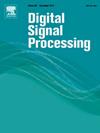Acoustic event detection for drone search and rescue system based on bi-directional long and short-term memory beamforming method to remove rotor noise
IF 2.9
3区 工程技术
Q2 ENGINEERING, ELECTRICAL & ELECTRONIC
引用次数: 0
Abstract
In outdoor search and rescue operations, drone carrying microphone array to collect acoustic signals has gradually been applied to search and rescue missions for people in distress. However, since the distance between the array and the drone is much smaller than the distance between the array to the trapped person, the drone rotor noise contaminates the collected acoustic signal seriously, which often makes the search and rescue system ineffective. It is necessary to study a method that can eliminate the influence of drone rotor noise on the detection results. To address this problem, an improved Minimum Variance Distortionless Response (MVDR) algorithm based on bidirectional long short-term memory network (BLSTM-MVDR) is proposed in this paper. This method includes the bidirectional long short-term memory network to estimate the time-frequency mask of drone rotor noise, which is used as the noise covariance matrix in the MVDR algorithm, to obtain the weight vector of the algorithm for eliminating the drone rotor noise, which removes the drone rotor noise component and improves the ability of the existing algorithms to resist the drone rotor noise. Finally, a Deep Learning-based sound event detection classifier is constructed by combining convolutional neural network to realize accurate and effective search and rescue of trapped people. To verify the accuracy and effectiveness of the proposed method, a complete drone search and rescue system is constructed using the server side of the hardware device and the client side of the software platform, and the effectiveness of the system in detecting the human voice event of trapped individuals is evaluated according to different signal-to-noise ratios, sound source directions and sound source distances. The results of this paper show that the effect using the method proposed in this paper is satisfactory, with the detection accuracy improved by 43.75 % and the effective search and rescue range doubled compared with the existing methods. This method improves the accuracy of outdoor search and rescue missions in a strong drone rotor noise interference environment, and promotes the development of drone technology applications.
基于双向长短期记忆波束成形方法的无人机搜救系统声学事件检测,以消除旋翼噪声
在户外搜救行动中,搭载麦克风阵列采集声学信号的无人机已逐渐应用于遇险人员的搜救任务中。然而,由于阵列与无人机之间的距离远小于阵列与被困者之间的距离,无人机旋翼噪声对采集到的声学信号污染严重,往往导致搜救系统失效。有必要研究一种能消除无人机旋翼噪声对探测结果影响的方法。针对这一问题,本文提出了一种基于双向长短期记忆网络的改进型最小方差无失真响应(MVDR)算法(BLSTM-MVDR)。该方法通过双向长短时记忆网络估计无人机旋翼噪声的时频掩码,将其作为 MVDR 算法中的噪声协方差矩阵,从而得到消除无人机旋翼噪声的算法权向量,消除了无人机旋翼噪声成分,提高了现有算法抵御无人机旋翼噪声的能力。最后,结合卷积神经网络构建基于深度学习的声音事件检测分类器,实现对被困人员的精准有效搜救。为了验证所提方法的准确性和有效性,本文利用硬件设备的服务器端和软件平台的客户端构建了一套完整的无人机搜救系统,并根据不同的信噪比、声源方向和声源距离评估了该系统检测被困人员人声事件的有效性。结果表明,使用本文提出的方法效果令人满意,与现有方法相比,检测精度提高了 43.75%,有效搜救范围扩大了一倍。该方法提高了无人机旋翼噪声强干扰环境下户外搜救任务的准确性,促进了无人机技术应用的发展。
本文章由计算机程序翻译,如有差异,请以英文原文为准。
求助全文
约1分钟内获得全文
求助全文
来源期刊

Digital Signal Processing
工程技术-工程:电子与电气
CiteScore
5.30
自引率
17.20%
发文量
435
审稿时长
66 days
期刊介绍:
Digital Signal Processing: A Review Journal is one of the oldest and most established journals in the field of signal processing yet it aims to be the most innovative. The Journal invites top quality research articles at the frontiers of research in all aspects of signal processing. Our objective is to provide a platform for the publication of ground-breaking research in signal processing with both academic and industrial appeal.
The journal has a special emphasis on statistical signal processing methodology such as Bayesian signal processing, and encourages articles on emerging applications of signal processing such as:
• big data• machine learning• internet of things• information security• systems biology and computational biology,• financial time series analysis,• autonomous vehicles,• quantum computing,• neuromorphic engineering,• human-computer interaction and intelligent user interfaces,• environmental signal processing,• geophysical signal processing including seismic signal processing,• chemioinformatics and bioinformatics,• audio, visual and performance arts,• disaster management and prevention,• renewable energy,
 求助内容:
求助内容: 应助结果提醒方式:
应助结果提醒方式:


